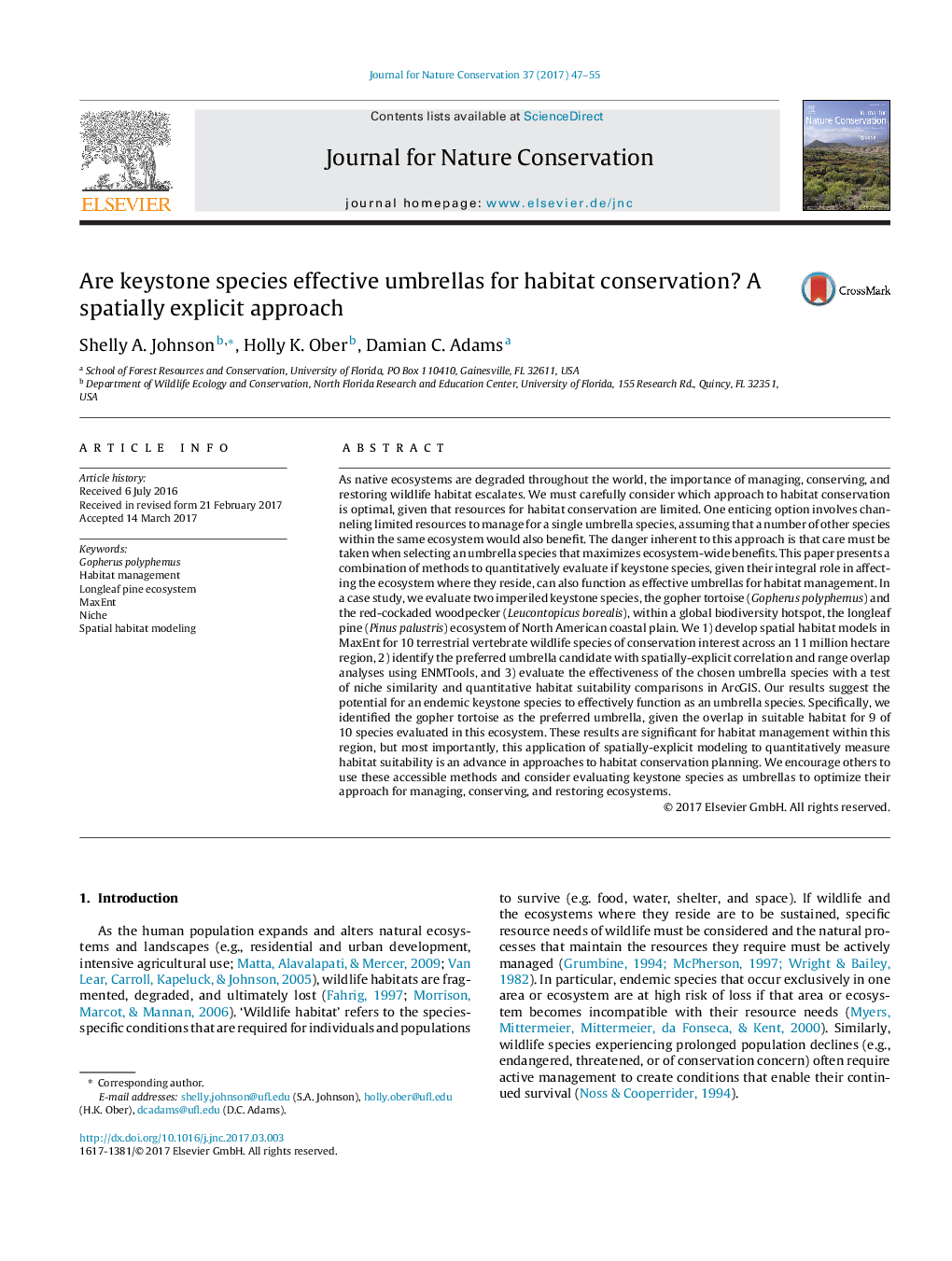| کد مقاله | کد نشریه | سال انتشار | مقاله انگلیسی | نسخه تمام متن |
|---|---|---|---|---|
| 5744830 | 1618531 | 2017 | 9 صفحه PDF | دانلود رایگان |
As native ecosystems are degraded throughout the world, the importance of managing, conserving, and restoring wildlife habitat escalates. We must carefully consider which approach to habitat conservation is optimal, given that resources for habitat conservation are limited. One enticing option involves channeling limited resources to manage for a single umbrella species, assuming that a number of other species within the same ecosystem would also benefit. The danger inherent to this approach is that care must be taken when selecting an umbrella species that maximizes ecosystem-wide benefits. This paper presents a combination of methods to quantitatively evaluate if keystone species, given their integral role in affecting the ecosystem where they reside, can also function as effective umbrellas for habitat management. In a case study, we evaluate two imperiled keystone species, the gopher tortoise (Gopherus polyphemus) and the red-cockaded woodpecker (Leucontopicus borealis), within a global biodiversity hotspot, the longleaf pine (Pinus palustris) ecosystem of North American coastal plain. We 1) develop spatial habitat models in MaxEnt for 10 terrestrial vertebrate wildlife species of conservation interest across an 11 million hectare region, 2) identify the preferred umbrella candidate with spatially-explicit correlation and range overlap analyses using ENMTools, and 3) evaluate the effectiveness of the chosen umbrella species with a test of niche similarity and quantitative habitat suitability comparisons in ArcGIS. Our results suggest the potential for an endemic keystone species to effectively function as an umbrella species. Specifically, we identified the gopher tortoise as the preferred umbrella, given the overlap in suitable habitat for 9 of 10 species evaluated in this ecosystem. These results are significant for habitat management within this region, but most importantly, this application of spatially-explicit modeling to quantitatively measure habitat suitability is an advance in approaches to habitat conservation planning. We encourage others to use these accessible methods and consider evaluating keystone species as umbrellas to optimize their approach for managing, conserving, and restoring ecosystems.
Journal: Journal for Nature Conservation - Volume 37, June 2017, Pages 47-55
